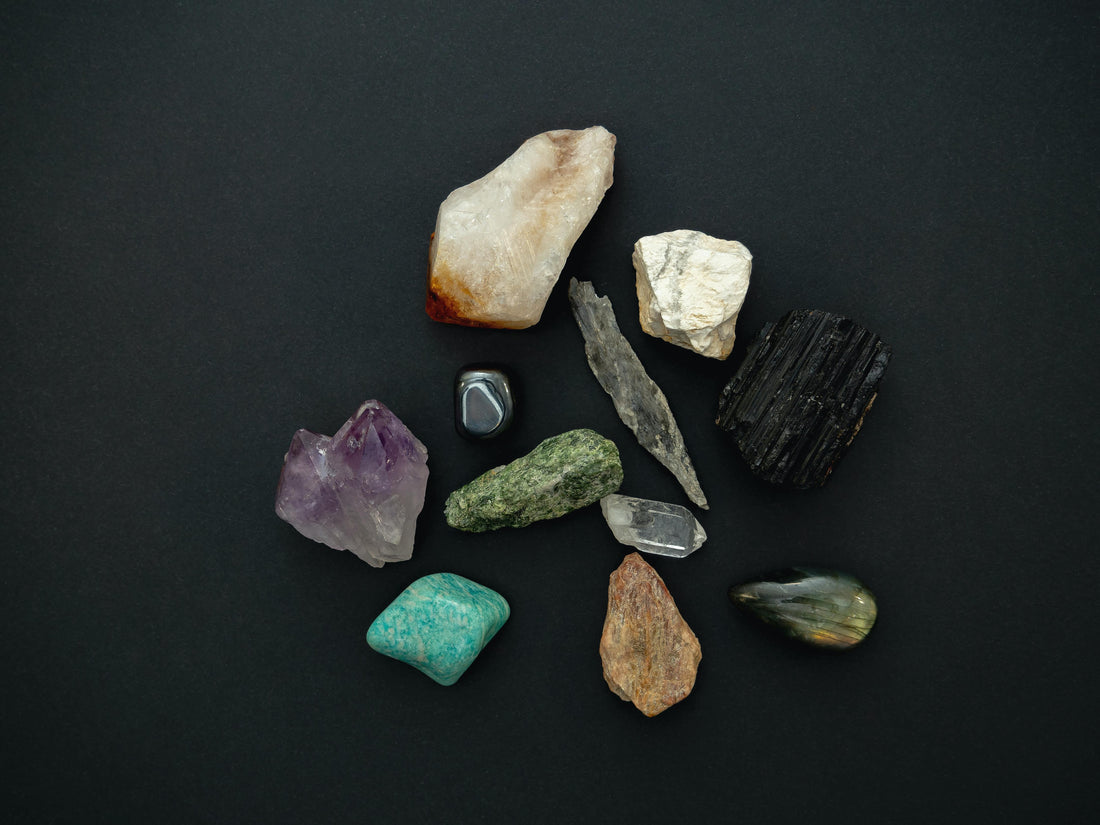Post's featured image by Dan Cristian Padure, Unsplash
SPOILER ALERT: It depends on your needs, the feels, and the situation.
Want to learn more about crystals?
allcrystal.com is a great resource for everything crystals. Their articles are written by crystal and gem specialists who make their knowledge readily accessible and easy to transmit for the public - no matter how new or how seasoned you are to this field-.
Be warned!: Please keep in mind that I have been a scientist much longer that I have been an energy worker, so there might be a lot of geek language involved and spiritual theories that may not resonate with you. I am also NOT a certified crystal healer. I am just a geologist with an unhealthy love for minerals and rocks who is just beginning to embrace their metaphysical power. This article is by no means intended to educate, but to share my learnings, ideas and crazy theories along my own growth path.
As a geologist, I have a natural inclination towards rough crystals and unpolished crystal points. That’s because my scientific part of the brain sees tons of valuable information where other people would see imperfections, defects or quirky features. The way a crystal breaks, its natural geometry, the variations of their colors and the natural shine in their unpolished surfaces, help me identifying them correctly and distinguishing a real crystal from a synthetic, man-made version of it.
As an energy worker, I still prefer rough/raw crystals because they are the closest in vibration to that of the natural conditions in which the crystal was formed. Even though they have been mined and broken down by humans, the influence of human energy in rough crystals feels diminished when comparing with their highly treated and “beautified” ones. But I also understand that there needs to be a sense of practicality and that sometimes the prettiest, largest, book-example of a crystal might not be the best choice for carrying in your pocket, or keeping in your car.
Tumbled crystals are usually made from fragments of rough minerals that don’t look quite pretty or are “not ready for primetime”. Polished rock has always seemed more attractive because it enhances the natural color of the crystal, not to mention the smooth feeling at the touch.
However, from the scientific point of view, certain crystals grow in particular shapes and directions that are common to their type (quartz might be a perfect example). This direction of growth is distinctive of each family of crystals, being not only important for their identification, but also by the direction in which the energy would flow. This is the reason why tumbled crystals aren’t popular among crystal grids - any obvious reference to their growth axes have been erased in the tumbling process, so there is no way to know how the energy will be transmitted through them.

In this figure: Crystalline structure of an ideal quartz crystal. The c-axis (vertical) shows the main direction of growth, which is also the main direction of energy flow. Taken from Tapper et al., The Canadian Mineralogist Vol. 51.
But, would you rather keep a rough, sharp piece of hematite or rough quartz in your pocket?. Of course not! This is when the tumbled crystals come to play. When the shape of the crystal is not really important, but their intrinsic energy instead - no matter how it irradiates, then by all means, a polished, carved, or tumbled version of the crystal is the best choice.
So here is my summary. I hope this helps you as a simple guide for choosing your next crystal.
ROUGH/RAW CRYSTALS:

Rough Amethyst. Source: Davies Designs Studio, Unsplash.
Pros of Rough/raw crystals:
- The closest to Mother Nature’s energy since the time of formation. Less affected by human energy.
- They offer an abundance of information about their story and identity. Their “imperfections” are actually tells of an authentic crystal, helping with their correct identification.
- Energy may flow better through sharp edges than through smoothed edges, making the energy flow more efficient.
Cons of rough/raw crystals:
- Too many rough edges might not make them as appealing or comfortable to carry as their polished versions.
- Energy may flow better through sharp edges than through smoothed edges, potentially making the energy flow to feel more INTENSE in high vibration crystals. If you are a highly sensitive person, then this might feel too overwhelming to you.
TUMBLED, ENGRAVED, OR CARVED:

Tumbled Rhodonite. Source: Benjamin Lehman, Unsplash.
Pros of tumbled/polished/carved crystals:
- Pocket sized or jewelry pieces are perfect to carry during the day as well as for correct placement over the chakras.
- More durable and resistant to water, tear and wear.
- Polished surfaces enhance their pretty colors, shine and textures.
- I believe their energy irradiates in all directions, although it may not flow in the same intensity across their surface.
Cons of tumbled/polished/carved crystals:
- Any reference to the original geometry and growth axes (along which the energy flows) has been erased, making them less ideal for crystal grids.
- More affected by human treatment = more lingering low vibration energy. Unless they were mined, treated and transported by happy singing monks!, their vibration may not be as close as that from their time of formation (this is just a theory of mine, I could be wrong!)
CRYSTAL POINTS AND DRUZES:

Amethyst Druzy crystals. Source: Kalineri Nyap, Unsplash.
Pros or crystal points or druzes:
- Perfect for crystal grids, rituals, or applications when knowing the direction of the energy flow is important.
- They are gorgeous!
Cons of crystal points or druzes:
- Depending on the use you have intended for them, you might need to be observant of the direction the crystal is pointing at.
Conclusion:
Wether they are tumbled, carved, rough, or in pointy form, crystals have intrinsic energies that are a reflection of their origins and of Mother Earth. Whether they are affected or not by human energies (from mining, handling, transport, carving, etc), their own natural intrinsic energy will remain in a greater or lesser magnitude.
Love your crystals, use them with intention and don't forget practicing good crystal hygiene!. Cleanse them before and after every use, and like with everything in Spirituality, treat them with respect.
Look at my downloadable info card: How Crystals Transmit Energy based on their shape


